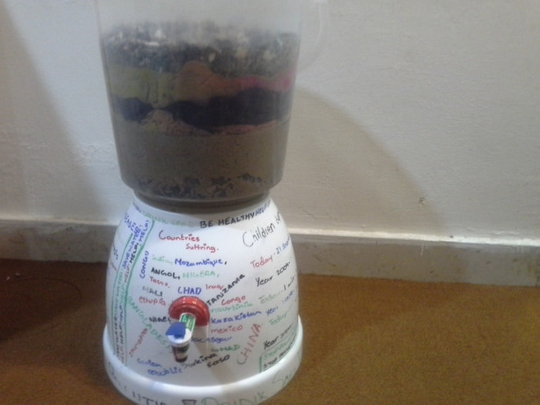
Abu Dhabi
Last summer, I realised that many people waste a massive amount of food. They leave so much of food on their plate in restaurants and all that food, which could have been eaten, ends up in landfills. On the other hand their are approximately 870 million people who are hungry even though our planet produces sufficient amount of food for every single one of us, according to statistics published by the World Food Program (WFP).
I wanted to do something about the issue and studied a lot about food wastage in general and wastage in the UAE. I gathered all the information and made a presentation. The first thing I planned to do is to spread as much awareness as possible so I started of with designing a few posters and now I have placed them all around my school. I have also spoken to student assemblies at school to remind people about food wastage. I think people should know about this issue, which is being ignored by many. I also want to approach hotels and restaurants and want to ask them to repack the good food they were about to throw away and give it to people who are in need.
Another issue that I was concerned about was the water crisis. In many countries people do not have access to clean water. Many people walk for miles, but end up getting dirty water, which then causes many diseases. They also can’t afford modern water purifiers or filters.
To tackle this issue, I made a homemade water purifier, which requires materials that can be easily found. It is very easy to assemble and easy to use. All you need is a container, sand, cloth, charcoal and some gravel. Layer the items in the container and let water seep through to collect purified water.
The cloth has tiny pores that can let out the water molecules, but stops anything bigger than that. The sand and gravel also help with the filteration process by stopping any larger molecules between the grains. The charcoal takes out any chemicals from the water and makes it tasteless and odorless. We used a black container because it absorbs more sunlight than any other colour. The UV rays from the sunlight disinfect and deactivate the bacteria.
People should be aware of these problems. I want people to know about them and want these crises, especially the hunger issue, to be resolved. If people get to know about them and start to reduce the amount of food they waste, then we can reduce the amount of hungry people and help them.
— The reader is a student based in Abu Dhabi.
Be a community reporter. Tell us what is happening in your community. Send us your videos and pictures at readers@gulfnews.com








